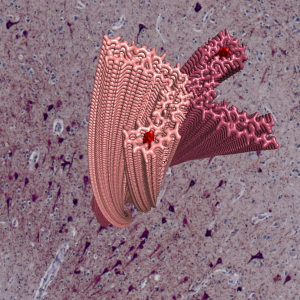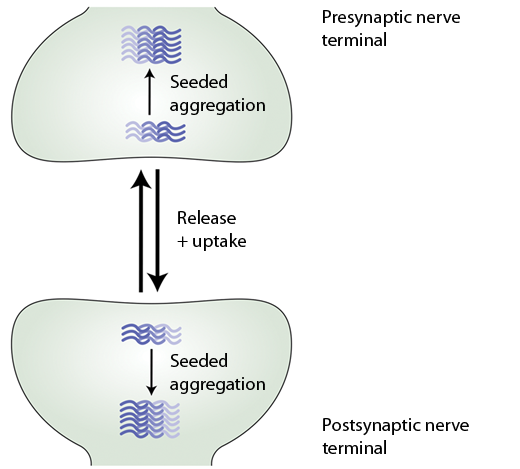The pathological assembly of specific proteins within neurons and glia is a hallmark of neurodegenerative diseases. These proteins include TAR DNA-binding protein 43 (TDP-43), tau, α-synuclein and TATA-box binding protein associated factor 15 (TAF15). They form amyloid filament structures enriched in intermolecular β-sheets. Mutations in the genes encoding these proteins that enhance their pathological assembly lead to inherited neurodegenerative diseases, demonstrating a causal role. The pathological assemblies arise in discrete brain regions, from where they appear to propagate (spread and amplify) within connected brain networks, ultimately leading to neurodegeneration.

We work to understand the molecular basis of protein assembly into amyloid filaments in neurodegenerative diseases. Key questions that interest us are: How do assemblies form and propagate? How does this contribute to nerve cell degeneration? Why are only some cell populations in the brain vulnerable? Why does selective vulnerability differ between diseases?

To answer these questions, we combine structural, molecular and cell biology, using high-resolution electron cryo-microscopy (cryo-EM) with patient samples and advanced models of assembly in neuronal and glial cells. Cryo-EM of assembly structures from human brains has revealed the existence of amyloid filaments with disease-specific folds and non-proteinaceous components. We are now studying how these structures relate to selective cell vulnerability by focusing on the molecular interactions between assemblies and brain cells.